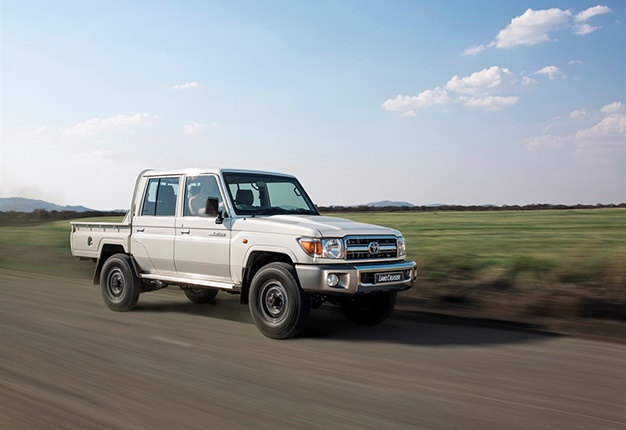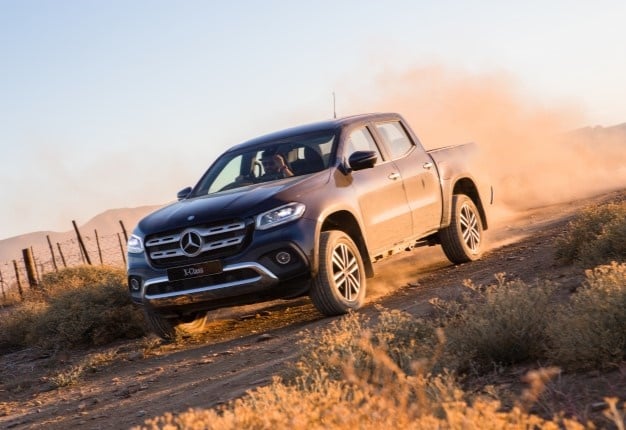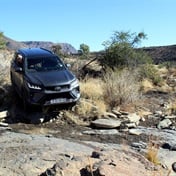
For decades the V6 petrol bakkie was South Africa’s pinnacle of double-cab ownership. Mitsubishi’s Colt, Ford’s Ranger, Nissan’s Navara and Isuzu’s KB were all once headlined by V6 engines. Not anymore.
In 2018 a single brand still offers the market V6 double-cabs which run on unleaded and unsurprisingly, it’s Toyota. That six-cylinder bakkie market, which appeared to be in peril as buyers converted to four-cylinder turbodiesel power of late, has been revitalised by the presence of German bakkies.
Rate of change for bakkies in SA
For years German automakers had not even passing interest in bakkies. But as customers in developing markets, with substandard road infrastructure, have migrated to bakkies instead of crossovers and traditional passenger cars, bakkie demand has surged and accordingly: pricing has increased too.
READ: Ford’s new Ranger Raptor: 5 fierce local bakkie rivals
Bakkies are now a hugely profitable business because the R&D costs are negligible compared to a unibody vehicle. And the easiest way to make them even more lucrative is to build bakkies with bigger engines, which command an even greater price premium.
Image: Motorpress
The consequence is that the Germans brand once indifferent to all things double-cab, and who possess an array of excellent engines and gearboxes, have entered the bakkie market in all earnest, creating options which were unimaginable only five years ago in terms of power output.
Toyota Hilux 4.0 V6
If you crunch the sales numbers, Toyota’s Hilux is unrivalled and there is one specific niche where it faces absolutely no competition: powerful petrol double-cabs.
Whereas all its rivals have discontinued their six-cylinder petrol engines, Toyota’s kept the faith, believing that a sufficient number of South Africans still value the throttle response and linear sand driving power delivery of an unleaded-fed V6.
Image: Supplied
Powering up to 175kW, Hilux V6 is thirsty (averaging close to 16l/100km in real world conditions), but if you are attempting to clear some towering Kalahari or Namibian dunes, there’s nothing which provides more confidence behind the wheel.
Toyota Land Cruiser 79 V6
Shares the same engine with Toyota’s V6 Hilux, the ‘Cruiser 79 is a very specialised vehicle. Whereas most Land Cruiser bakkies are valued for their enormous chassis strength and ability t slowly crawl over extreme terrain, fully loaded, the V6 Land Cruiser is a dune warrior.
Image: Supplied
Toyota’s off-road legend was effectively established by the 4.5-litre in-line six Land Cruiser bakkies and many ‘Cruiser fans were disappointed when the trusty EFI engine was replaced by a 4-litre V6 in 2009. On paper the V6’s outputs were better and in time it has become trusted and revered.
The appeal of Land Cruiser V6 is combining a responsive engine with a nearly unbreakable double-cab frame: enabling relatively brisk highway cruising and tremendous desert-crossing ability. The latter is confirmed by Land Cruiser V6 bakkies being the vehicle of choice for Botswanan and Namibian mining and exploration crews.
VW Amarok V6
The bakkie which has revolutionised VW’s image in the double-cab market. Powered by a slightly more heat and load resistant version of Audi’s 3.0 TDI V6, this Amarok’s appeal isn’t merely its power or torque.
Although 165kW and 550Nm are impressive outputs, much of Amarok V6’s driving appeal is anchored by the interplay between those numbers and the bakkie’s gearing.
Image: Motorpress
Using ZF’s excellent eight-speed automatic, which does duty in vehicles as diverse as Rolls-Royce’s Ghost, Amarok’s performance stats are beyond reproach: 0-100kph in 8 seconds and a top speed of 193kph.
Best of all is the overboost function, which increases outputs to 180kW and 580Nm for brief ten second interludes, during peak throttle demand – such as when you are overtaking.
Mercedes X350d
Due for local release early in 2018, X350d is the direct rival to Amarok V6 and the two bakkies are very evenly matched.
The X350d has more relative engine power, at 190kW, yet its 550Nm torque number is trumped by the VW on overboost, which registers 30Nm more.
Image: Supplied
Mercedes-Benz’s double-cab also has one less gear, but perhaps most critically, it weighs 158kg more than the Amarok.
Power to weight is the most crucial determinant of throttle response and although both bakkies have sophisticated all-wheel drive systems, the difference in performance is negligible due to the X350d’s mass.
That said, with a benchmark 0-100kph sprint time of 7.5 seconds and 205km/h top speed, Mercedes will claim the status of SA's fastest bakkie when X350d goes on sale.




 Publications
Publications
 Partners
Partners















